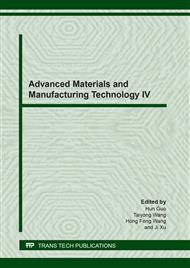p.63
p.72
p.82
p.96
p.104
p.115
p.125
p.135
p.143
Properties of Sintering-Boride for Fe-Based Powder Metallurgy Material
Abstract:
The powder compact was directly sintered by a pack boride process to prepare an Fe-based material having a boride layer. The effects of process parameters such as sintering temperature and sintering time on the microstructure and quality of the layer were studied. The thickness of the layer, surface hardness, phase composition and properties of friction and wear were also studied. The results show that the boride layer was mainly composed of Fe2B, and its thickness is uniform and firmly bonded to the substrate. The thickness and hardness of the layer gradually increase with time and temperature. When the sintering temperature was higher than 1050°C, the more obvious holes and looseness would be appeared in the layer, which was not conducive to improve the properties of material. The thickness of the layer has the best value range with this method. Ensuring the thickness of the layer within a suitable range by controlling the sintering temperature, sintering time and other process parameters was beneficial to reduce the brittleness of the boride layer and improve the friction and wear properties of the material.
Info:
Periodical:
Pages:
104-111
Citation:
Online since:
October 2020
Authors:
Keywords:
Price:
Сopyright:
© 2020 Trans Tech Publications Ltd. All Rights Reserved
Share:
Citation:


